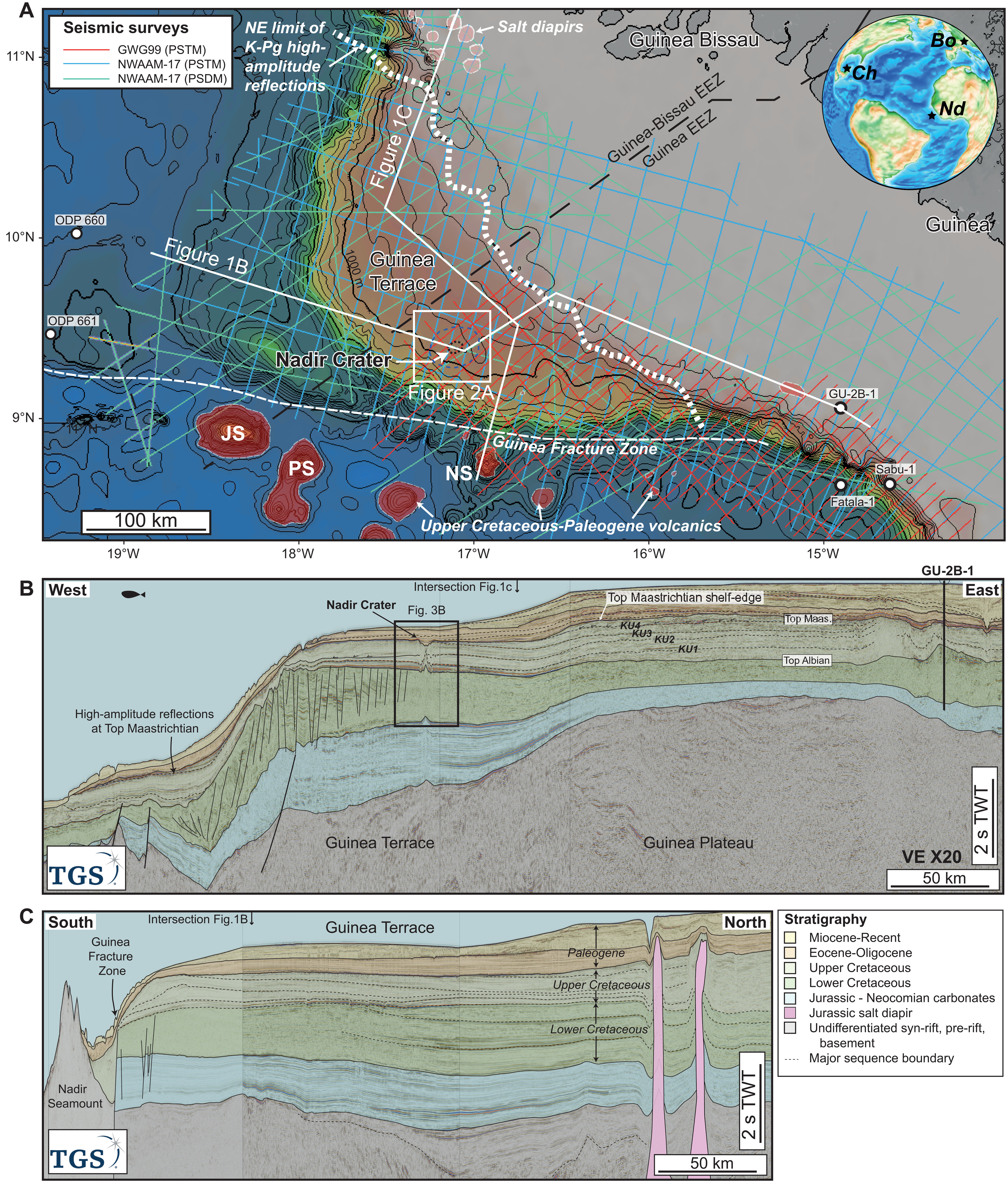THE SOUTHWORTH PLANETARIUM
70 Falmouth Street Portland, Maine 04103
(207) 780-4249 usm.maine.edu/planet
43.6667° N 70.2667° W
Founded January 1970
2022-2023: IV
Sunrise: 6:05 a.m.
Sunset: 7:16 p.m.
Civil twilight ends: 7:46 p.m.
Sun's host constellation: Leo the Lion
Moon phase: Waxing crescent (25% illuminated)
Julian date: 2459822.16
"In all chaos there is a cosmos, in all disorder a secret order."
-Carl Jung
THE DAILY ASTRONOMER
Thursday, September 1, 2022
Second Asteroid?
We return now to what has to be the single most famous event in all of Earth's natural history: the 10-mile wide asteroid impact that devastated the planet approximately 66 million years ago. This errant celestial projectile gaugued out the 100-mile wide hole now known as the Chicxulub Crater, located within the region now known as the Yucatan peninsula. Not only did this blazing bullet from the wild black yonder annihilate the life forms unfortunate enough to have been loitering within the impact vicinity. It also cast off megatons of flaming debris that literally set the planet afire while propelling enough particulate matter into the upper atmosphere to precipitate an impact winter lasting the better part of a decade. That deep freeze disrupted the photosynthetic process and ultimately led to the extinction of 90% of the species then extant, including, most notably, the non-avian dinosaurs. Fortunately, our ground-burrowing mammalian forbearers persevered through this global climate crisis and survived. Once the dominant dinosaurs had been dispatched, the mammals ascended into alpha status which ultimately led to the rise of humans, the craftiest and most mischievous of all the higher primates.*
This one asteroid impact is likely so well known because we partially owe our existence to it. Perhaps, however, we should ascribe the rise of humans to TWO asteroid impacts, not just one. According to a report recently published in Science Advances, a research team has detected evidence of what might be another impact crater located 400 kilometers off the west African coast. The researchers, led by crater formation expert Dr. Veronica Bray, detected this possible crater through use of acoustic waves transmitted through a sea column, a common method of seafloor mapping.

Dubbed the "Nadir Crater," in reference to an undersea volcano of the same name, this possible impactor likely struck Earth around the same time as the Chicxulub asteroid. Although this secondary asteroid was much smaller, about 0.25 miles in diameter, it would have crashed into the sea at 20 kilometers per second (44, 739 miles per hour.) . The resultant disturbance would have been equivalent to a magnitude 7 earthquake and caused tsunamis to propagate across a wide region. The Nadir asteroid would have contributed to the upswell of ejecta produced by the primary impactor.
If confirmed, this asteroid impact could solve a mystery that has been bothering many planetary scientists since the discovery of the Chicxulub event. They wondered how a single impact, albeit a powerful one, could have resulted in a global conflagration and subsequent impact winter. The Chicxulub asteroid, according to Bray, "might have had help."
This asteroid might have been a fragment that flaked off Chicxulub or it could have been a binary companion that arrived around the same time. The probability of it having been a separate, unrelated asteroid which just happened to reach Earth at the same time is vanishingly small. Further studies will be required to both determine if it was, indeed, an asteroid and its relation to the Chicxulub object.
It is possible that we might need to thank not one, but two asteroids, for ushering in our modern world. Further studies will be required to determine if either the cause or effect will end up being the most disturbing.
*The "Egg to Apple" course will delve much more deeply into this event sequence.
To subscribe or unsubscribe from the Daily Astronomer: